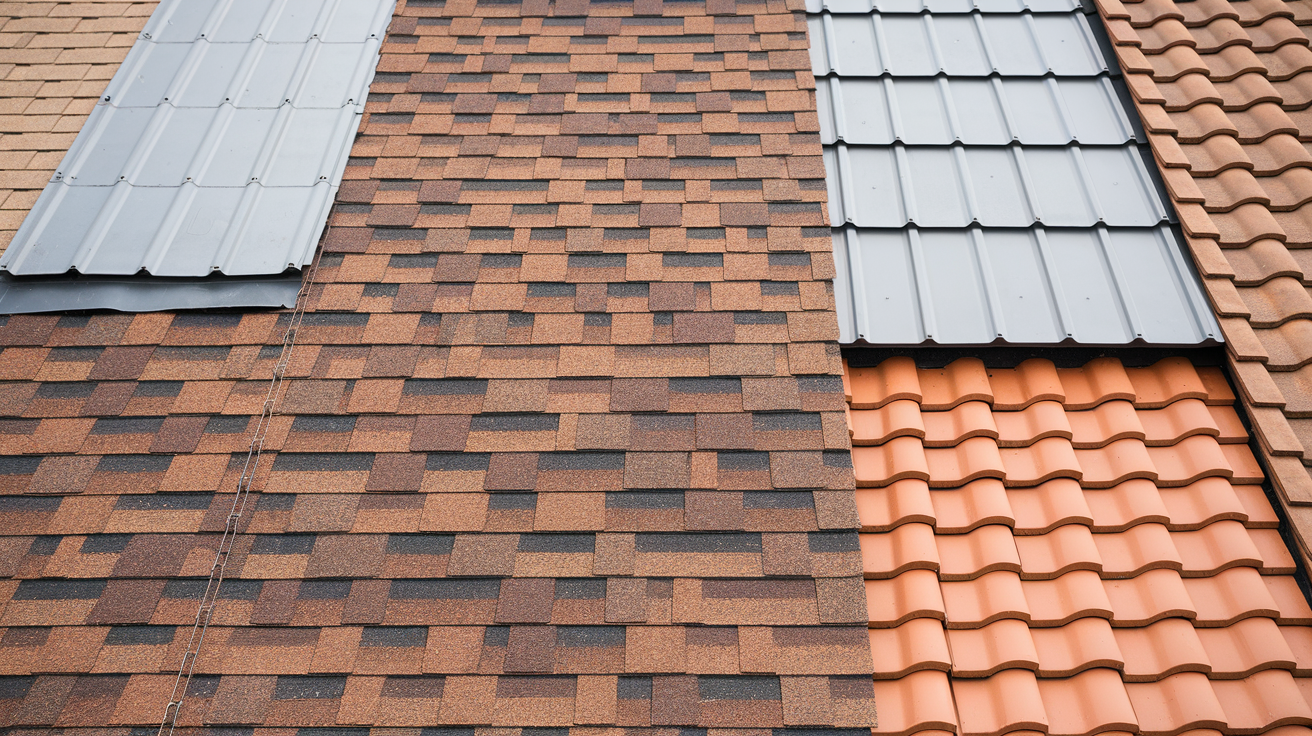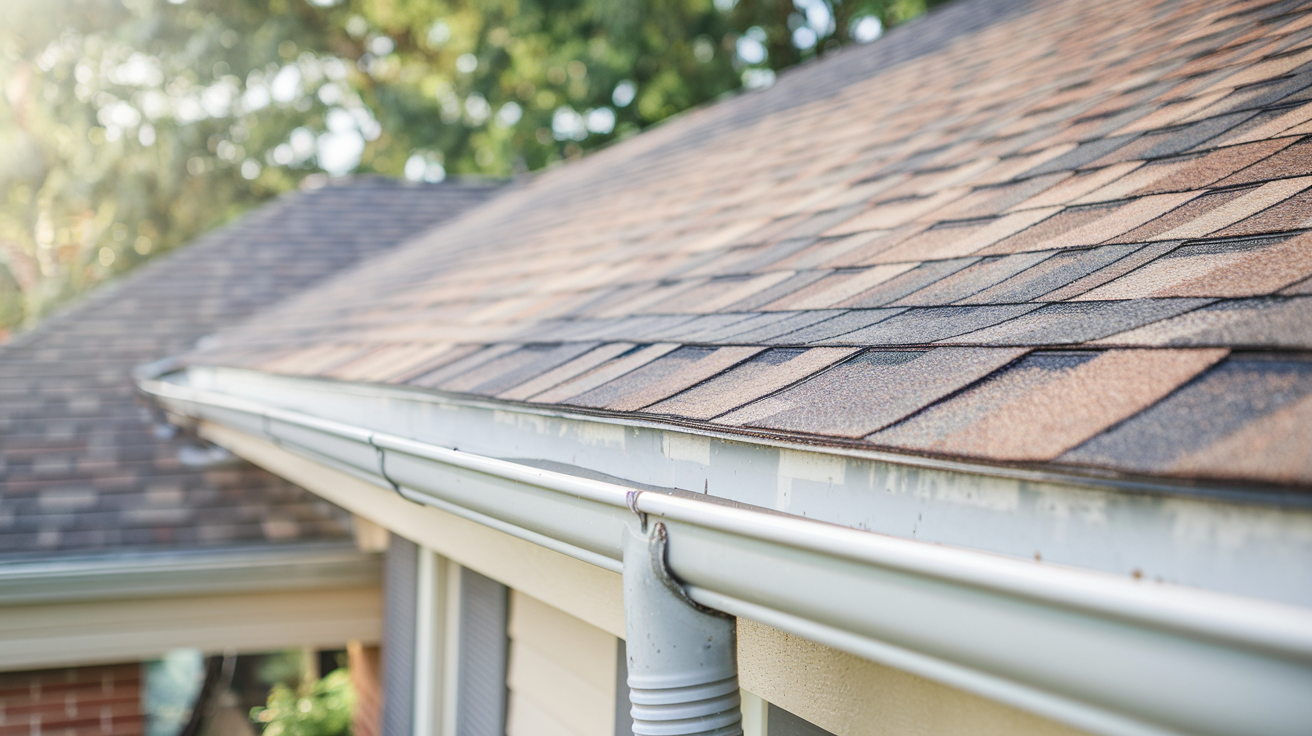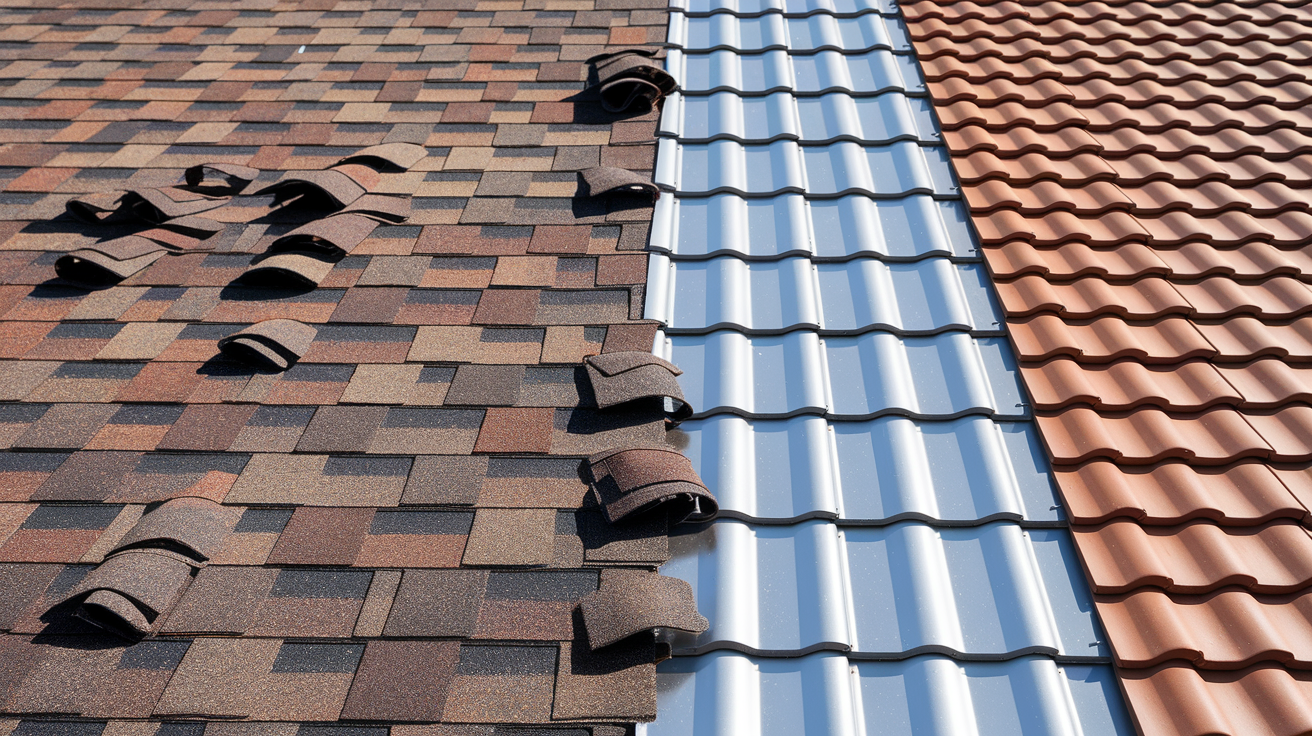7 Costly Roof Myths Debunked: Expert Guide to Smart Maintenance
Your home's roof is more than just shingles and gutters - it's your first line of defense against the elements. Yet 60% of homeowners admit to neglecting regular roof maintenance, often due to common misconceptions that can lead to costly mistakes. With the average roof replacement costing $9,191, believing these myths isn't just risky - it's expensive.
From thinking all roofing materials are equal to assuming new roofs need no maintenance, these misconceptions can slash your roof's lifespan and drain your wallet. Industry data shows that proactive maintenance costs just 14 cents per square foot annually, while reactive repairs after damage occurs jump to 25 cents - nearly double the cost.
In this comprehensive guide, we'll debunk the most common roofing myths that could be compromising your home's protection. You'll learn how different materials actually perform, why maintenance matters more than you think, and what hidden damage signs you can't afford to ignore.
- Understanding Common Roof Myths
- Myth: All Roofing Materials Are Equal
- Myth: Roofs Require No Maintenance
- Myth: Visible Damage is the Only Concern
- Myth: Roof Replacement Can Be Done Without Professionals
- Conclusion
Understanding Common Roof Myths
The roof over your head is one of the most crucial parts of your home. However, misunderstandings about roofing can lead to expensive mistakes. Many homeowners believe myths that prevent them from making smart choices about roof maintenance, materials, and repairs. Understanding these myths is key to protecting your investment and keeping your home safe and comfortable. By debunking these myths, you can avoid unnecessary costs and extend your roof's lifespan.
Importance of Debunking Roof Myths
Debunking roofing myths is crucial because misinformation can result in poor maintenance and costly repairs. For instance, some believe a roof doesn't need regular checkups, leading to hidden damage that worsens over time. This can cause leaks, mold, electrical problems, or rotting wood. These issues can be expensive to fix, sometimes necessitating major repairs or even a complete roof replacement. Industry data suggests that a significant percentage of homeowners in the US don't inspect their roofs often, increasing the risk of serious problems. A good roof inspection includes checking for missing or broken shingles, clogged gutters, signs of leaks, and assessing the overall structure. Understanding roofing myths helps homeowners make informed decisions about materials and maintenance schedules, saving money and extending the roof's life. Knowing how long different roofing materials typically last, such as 20-30 years for asphalt shingles and 40-70 years for metal roofs, can aid in planning and budgeting. This knowledge allows you to plan for a new roof and save money for it.
Benefits of Regular Roof Inspections
- Catches small problems early
- Prevents extensive damage
- Increases roof lifespan
- Saves on costly repairs
Overview of Common Misconceptions Among Homeowners
Many homeowners harbor incorrect ideas about roofing. Understanding these common myths can help you avoid problems. One prevalent myth is that all roofing materials are the same, which can lead to choosing unsuitable materials for your home. For example, asphalt shingles may not be the best choice in areas with frequent hail; metal roofing might be a better option. Other materials like tile or built-up roofing (BUR) offer varying lifespans and performance levels. Another myth is that a new roof requires no maintenance for years. Even new roofs need regular checks to identify small issues before they become significant problems. Cleaning off debris, clearing gutters, and fixing storm damage are crucial, even for new roofs. Gutters should be cleaned twice a year, in spring and fall, and roofs should be inspected annually or after severe weather. Finally, many people think a warranty covers every roof problem, which is often not the case. Warranties typically have limits and don't cover everything. Homeowners should read their warranty carefully to avoid surprise costs. Understanding these myths helps homeowners make informed choices and maintain their roofs effectively.
Myth: All Roofing Materials Are Equal
The notion that all roofing materials are the same is a common myth. Choosing the right material affects the roof's longevity, performance, and cost. For instance, asphalt shingles cost less than tile but don't last as long. Each material works best in certain climates and with specific house styles. Tile is suitable for hot climates, while metal roofs are ideal for snowy areas. Selecting the right material is crucial for a long-lasting and effective roof.

Key Differences in Material Performance
Different roofing materials perform differently, impacting their longevity and energy efficiency. Metal roofs are known for their durability and low maintenance needs, making them suitable for areas with severe weather. Asphalt shingles cost less but may require more frequent repairs and replacements. Other materials, like tile or composite shingles, offer benefits like better insulation or aesthetic appeal. Choosing the right material for your needs and environment is essential. Consider maintenance requirements and local weather conditions.
Asphalt Shingles
- Cost: Low
- Longevity: 15-30 years
- Maintenance: Moderate
Metal Roofs
- Cost: High
- Longevity: 40-70 years
- Maintenance: Low
Tile Roofs
- Cost: High
- Longevity: 50+ years
- Maintenance: Low
Lifespan Variations Among Materials
The lifespan of a roof varies significantly depending on the material, affecting long-term maintenance costs. Asphalt shingles last 15 to 30 years, while metal roofs last 40 to 70 years. Tile roofs often last over 50 years. Understanding material longevity helps in future planning. If you plan to sell your home soon, asphalt shingles might suffice. For long-term residence, metal or tile may be better options.
Cost Implications of Choosing Different Materials
Roofing materials vary in price. While upfront cost is important, consider maintenance and lifespan. Asphalt shingles have a lower initial cost but may require more frequent replacement. Metal roofs are more expensive initially but need less maintenance. Consider total cost, including price, maintenance, and lifespan, to make an informed decision.
Myth: Roofs Require No Maintenance
The belief that roofs require no maintenance is a costly myth. Regular roof maintenance maximizes lifespan and ensures optimal performance. This includes tasks like cleaning gutters, trimming overhanging branches, and scheduling inspections. Neglecting these can lead to leaks, mold, and structural problems. Understanding the importance of maintenance can save significant money and stress.
Essential Benefits of Regular Roof Maintenance
Regular roof maintenance offers several key benefits:
- Early Problem Detection: Regular maintenance allows early detection of issues like minor leaks or loose shingles, preventing major repairs.
- Enhanced Energy Efficiency: Maintaining your roof can conserve energy, potentially lowering utility bills by preventing damage that compromises insulation.
- Extended Roof Lifespan: Well-maintained roofs last longer, delaying costly replacement. Even new roofs need maintenance to prevent damage from debris and severe weather.

Common Practices to Extend Roof Lifespan
Several practices can effectively extend roof life:
- Gutter and Drain Cleaning: Clean gutters and drains regularly to prevent water buildup.
- Overhanging Branch Trimming: Trim branches to reduce storm damage risk.
- Periodic Inspections: Conduct inspections twice a year to identify wear and tear. Even durable materials like metal benefit from regular checks.
Statistics on Neglect and Resulting Damage
Neglecting maintenance can have a financial impact. Proactive maintenance costs 14 cents per square foot annually, while reactive maintenance costs 25 cents. Furthermore, 33% of roof replacements are due to storm damage, often preventable with regular maintenance. These statistics demonstrate the financial benefits of regular maintenance and potential costs of neglect.
Proactive Maintenance
Cost: 14 cents/sq ft
Includes regular checks and small repairs
Reactive Maintenance
Cost: 25 cents/sq ft
Often requires major repairs
Myth: Visible Damage is the Only Concern
Many homeowners believe only visible damage requires attention. This misconception can lead to significant problems. Not all damage is immediately apparent. Ignoring potential issues can lead to costly repairs or premature replacements. Understanding hidden roof damage is crucial. Proactive steps ensure longevity and safety.
Hidden damage often goes unnoticed but can lead to severe issues. Invisible leaks can cause mold growth, electrical hazards, and wood rot. Such damage might not always be visible but weakens the roof's structure. This hidden damage can lead to more frequent repairs or a full replacement.
Importance of Regular Inspections
Regular inspections uncover hidden damage before it escalates. Homeowners should schedule inspections annually, especially after severe weather. Even new roofs benefit from regular inspections to catch potential issues early.
Examples of Overlooked Damage and Associated Risks
Several types of damage are often overlooked:
- Missing or Damaged Shingles: Can lead to water infiltration and interior damage.
- Clogged Gutters: Cause water to back up under the roofline, leading to rot and decay.
- Minor Storm Damage: Can evolve into structural concerns if left unaddressed.
Myth: Roof Replacement Can Be Done Without Professionals
A common misconception is that homeowners can easily replace roofs themselves. While DIY projects can save money, roof replacement is complex and risky. DIY attempts can cause leaks, poor ventilation, and even structural damage, leading to higher costs later.

Risks and Challenges of DIY Roof Projects
DIY roof replacement poses many risks, including:
- Material Selection and Measurement Errors: Incorrect measurements lead to wasted materials.
- Safety Hazards: Falls and injuries are common in roof work.
Advantages of Hiring Professional Roofers
Professional roofers offer expertise and experience. They understand the latest technologies and materials, ensuring optimal performance and durability. They also provide warranties on labor and materials.
Long-Term Cost Implications of Improper Installation
Poor installation has significant long-term costs. Issues like leaks and mold impact health and home value. Professional installation ensures optimal performance and protects against future financial burdens.
Conclusion
Recap of Misconceptions and Realities
This section summarizes common roofing misconceptions and clarifies the facts. Many homeowners believe roofs don't need regular inspections, but annual checks prevent costly damage. Another misconception is that all roofing materials are the same; in reality, materials have vastly different lifespans and maintenance requirements. Finally, the idea that roofs require no maintenance is false; routine maintenance extends lifespan and prevents problems.
Encouragement for Informed and Proactive Homeownership
This section empowers homeowners to take control of roofing decisions. Understanding the facts allows for proactive maintenance and informed replacement choices. Regular maintenance saves money over time, offering substantial value. By staying informed and proactive, homeowners protect their investment and ensure the longevity of their homes.
Disclaimer: This blog post is intended for informational purposes only and should not be considered professional roofing advice. Always consult with qualified roofing contractors and insurance professionals for specific guidance regarding your individual circumstances.
